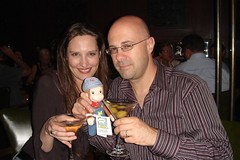I have just returned (and recovered) from Newcastle’s DiG Festival. I had expected it to be an Australian SXSW and I was not disappointed.
Newcastle in NSW’s Hunter Region, turned on the weather and the charm, playing host to hundreds of festival participants, local businesses and a swarm of innovators keen to connect. The festival itself was a tightly run, but eclectic mix of topics, speakers, academic research and workshops. Sponsored by the Commonwealth Bank and with backing from the University of Newcastle, PwC and local startup accelerator, Slingshot, the festival brought together the research, business, startup and innovation communities in a unique format over two days.
There were various streams all happening at the same time – with talks in the main hall, workshops close by, networking out by the bar, and an open innovation team challenge upstairs. People were constantly weaving between the spaces – dropping into workshop sessions, popping out to network and share information, heading out for in-depth discussions over coffee or settling in for the meaty topics in the main hall. There was a real buzz and energy that was backed by some serious, high-powered speakers.
The Commonwealth Bank’s Nick Aronson got everyone fired up around the “future of payments” on day 1, and Jeff Julian rounded out the day with a jaw-dropping demonstration of his creative prowess. The day 2 keynote from Pandora’s Jane Huxley had everyone tapping their feet to the music and IBM’s Catherine Caruana-McManus dazzled at day’s end with a vision for a smarter, more sustainable cities. Topping and tailing the festival this way provided a strong focus to an inaugural event and demonstrated the way that businesses and communities are collaborating in innovative new ways.
But it wasn’t just the keynotes that showed the quality of the festival. Many of the attendees could also have presented on-stage – there were thought leaders, business and community leaders and startup entrepreneurs with dozens of ideas and projects well underway.
I presented “Stop Talking at Me. No one is Listening: The New Physics of the Consumerverse” – and had a great time in front of a great audience. I was followed by the powerhouse insight of retail guru, Nancy Georges. I believe all of the presentations were recorded and will be made available online in the near future. Be sure to check out the DiG Festival website for updates.
And in the meantime, pencil DiG Festival into your 2014 schedule. This was just the beginning, and it’s only going to get better from here.

